
He has many 'firsts' to his name. From being the first national English news reader at Delhi Doordarshan Kendra, to starting India's first private television channel and the first exclusive journalism college on the lines of the Columbia School, Sashi Kumar has done several path breaking things in his life.
Sashi Kumar always had an entrepreneurial streak in him. Even though, his first venture was an advertising agency but what he has done as an entrepreneur after that has been all 'first's of its kind.
Sashi Kumar, now the chairman of Asian College of Journalism (ACJ), talks about his path breaking ventures.
For Rediff Realtime News, ...

Entrepreneur during college days
Sashi Kumar started out as an English news reader on Madras Doordarshan in the '70s. During those days, only regional Doordarshan Kendras in Delhi, Madras, Bombay and Calcutta had local English news and there was no national news.
He was a college student then. "For a 14-day contract, I was paid Rs 400. There would be a one-day break and then another 14-day contract. So, I made Rs 800 a month reading the news."
While he was studying and was occupied with his job as a news reader, he also started an advertising agency with his friends and named it 'Acme'.
They started it with no capital and initially operated out of home. What helped them get work was their "gift of the gab".
...

While Sashi Kumar did the wacky copy writing job, his classmate Ajit Ninan did the illustration. (Ninan is now a cartoonist with Times of India). "What we did was offbeat; not the formal kind of ads," he says.
As it was a group of classmates who were doing things together, they shared whatever money they earned. Within three to four months itself, they made a lakh of rupees!
Once they had acquired a substantial sum, they started operating out of a proper office space. They were quite successful and went on to make movie ads and radio spots for bigger clients.
"That was my first step as an entrepreneur, and quite a successful one at that. In about two years, I bought a flat in Chennai from the money I made from advertising," he said proudly.
...

From Chennai to Delhi
By this time, Delhi Doordarshan had started national news bulletins in English, and Kumar was chosen to read the news from Delhi. He along with Neeti Raveendran, were the first news readers on National DD.
"I used to not only read news but cover all the major international film festivals for DD and also write for The Hindu. Those were serious articles on cinema like the New Wave movements, trends, etc."
...

Break from advertising to become a journalist
One day the editor of The Hindu called him to his office and asked him whether he would like to start and head the West Asian bureau of the paper.
He accepted the offer. "When you are young and raring to go, all new challenges are welcome. I left the agency in charge of Isaac Thomas (one of his friends, who was part of the agency) and started my new work."
In 1983-84, he was asked to go on a tour of West Asia to choose a place to start the bureau. He recommended Bahrain because "it was a good communication base and the Iran-Iraq war was in the last phase."
He considers his days as the West-Asian correspondent of The Hindu as the most interesting and eventful phase in his career. "It is mainly because the Iran-Iraq war was taking place and I also travelled extensively in the regions like in Egypt, Iran, Iraq, Palestine, etc."
While he was in Bahrain, he also got a chance to edit and read two news bulletins on Radio Bahrain. This made him the first non-British news reader to do so.
"It was a good source for news and also a chance to network with people. They also paid very well."
...

The road back to India
Soon after this assignment, he was back in India. After a very brief stint as the Mumbai head of Mudra Videotech, he accepted an offer from the Press Trust of India (PTI) to set up TV news production for them.
"I went to Delhi and set up PTI TV. We started off with news feeds and then full fledged news programmes. Within a year, we did the most number of programmes for Doordarshan like Money Matters, Thana Bana, Jan Manch, etc. We also covered international programmes like Indo-Srilankan affairs, the collapse of the Berlin wall, the collapse of the Soviet Union, the Soviet pull out from Afghanistan, a series on disarmament, etc."
He was with PTI TV for seven years.
...

Idea to start a PTI-like news channel
At that time, PTI TV was the leading banner in India in news related programmes. "So, while I was in PTI, I had proposed to the PTI Board to start our own channel like the BBC. That was the logical thinking, I felt."
His model was Ted Turner and his idea to start CNN; both cable and TV channel.
"If Doordarshan was state owned, PTI could be a public channel, I suggested. I even suggested the name Asianet. Some of the members were not supportive and the discussions went on and on. I became frustrated and decided to leave."
...
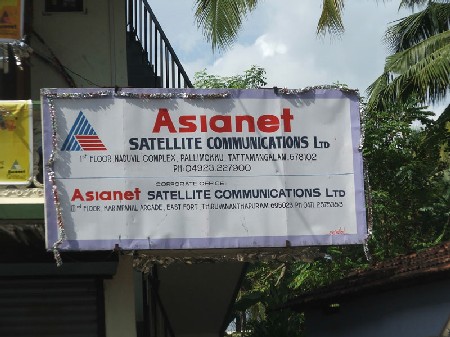
Starting India's first private TV channel, Asianet
"I always felt that if the idea was good and path-breaking, money won't be a problem at all." He was right.
His uncle Reji Menon, a trader in Russia, became his partner. They were 50-50 partners. Both of them put in Rs 5 lakh each and decided to start Asianet.
"I couldn't start a national channel on my own. So I chose Kerala, a state that is crazy about news and news related stories."
What he did first was meet the Chief Minister of Kerala, K Karunakaran and use the catchword, Communication Revolution in Kerala. That got the CM excited. His idea was to start both cable network and a TV channel like Ted Turner did.
He told the CM that Asianet would not only be a TV channel but it would distribute other channels and also value added services like broadband, e-commerce, e-shopping, electronic banking, etc in due course of time.
...
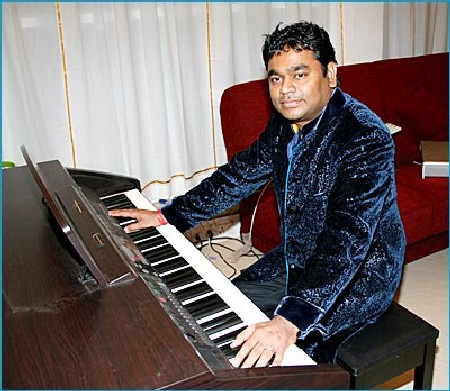
Just like Turner who used electricity poles for cabling, Sashi Kumar also chose to follow the same method. "Karunakaran played a very big role in setting up Asianet in Kerala. He helped me get an agreement with the KSEB for the right to use the electricity poles. We got the right to use the poles for a nominal fee of Rs 10 per pole per year for a period of 10 years. That made a lot of difference."
This agreement became his investment. "That was how we got bank loans and money from the equity market. Altogether, we collected Rs 10 crore. Nobody believed it was possible," he adds, "All those who were part of my PTI TV joined me at Asianet also. The transponders were bought from Russia."
The theme music for the channel was composed by AR Rahman. And, well known designer Sujata Keshavan designed the logo.
"One evening in 1992, we started operations from Guruvayoor as Karunakaran wanted it from there. We were relieved when the images came! Till then, it was tense-moments. Because there was no precedent, we had to think all the time. But all went well."
From the second year, Asianet started making profits.
...
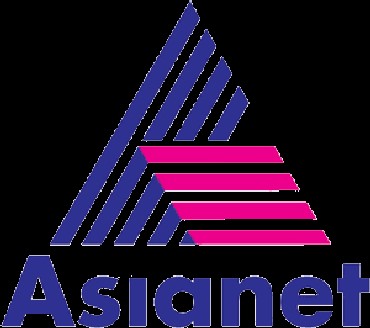
The end of Asianet journey
As it happens everywhere, after the channel became successful, there was tensions about divesting stakes. They had already divested cable to the Rahejas. There arose a problem between Sashi Kumar and his uncle. "He wanted to continue, so I sold my 50 per cent stake to him and stepped out."
He was with Asianet for 10 years.
He was so successful in this field that today there are no private channels in South India (including the Sun TV group) that have not taken Sashi Kumar's advice in setting up the business.
...
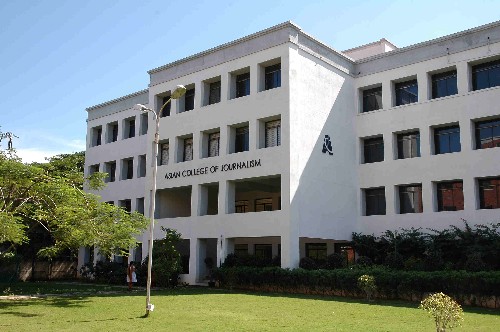
Starting AsianCollege of Journalism
Even when he was with Asianet, he felt that India didn't have a proper institution for journalism. "We have only courses in Mass Communication which is different from journalism. I wanted to start a school on the lines of the Columbia School of Journalism."
So after he resigned from Asianet, he had a chat with N Ram of The Hindu, who is an alumnus of Columbia School of Journalism, on starting a journalism college on those lines. That was the beginning.
"In 2000, with the money I got from selling my stake in Asianet, I put aside $1 million to start the Asian College of Journalism (ACJ). The Ford Foundation also put in some money. I decided to do it as a not-for-profit venture. We have a trust with four founders – N Ram, myself, my wife Radhika and my brother in law CP Chandrasekhar."
...
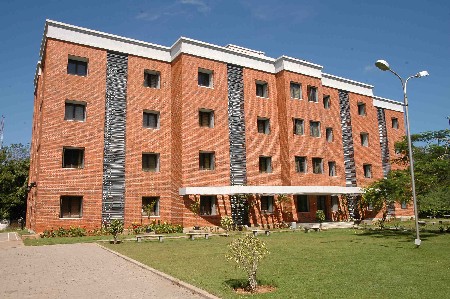
Curriculum, faculty and students
What Ram, Chandrasekhar and Sashi Kumar did first was to go on a tour of the best journalism schools in the world. Based on what they saw and learnt, Ram created the curriculum adapting it to India and also "introducing our own trademark courses."
"In terms of faculty, we were lucky to get a BBC link through Monisha Shah, a friend of mine who worked with Asianet in Mumbai. So now we have trainers from the BBC. We also have people coming from Columbia School and Cardiff to teach at ACJ."
Sashi Kumar was sure in the beginning itself that they would have to set the bar high. The fee was Rs 75,000 in the year 2000, which was unheard of then. Yet, ACJ got 500 applications and from that, they chose 60 students.
"We could place all our students and even at the time of recession, it was 100 per cent and in some good years, it was 200 per cent with each student with two placements."
Today, they have 157 students and teach on print, TV and online media.
...

On pioneering work:
To do pioneering work, "there are advantages and disadvantages. The disadvantage is, you have nothing to follow. The advantage is that nobody tells you what to do. So you are setting a trend and that is far more challenging. I find it very exciting. Of course, what Ted Turner did was my reference point though I never met him for advice. I like to think of myself as an idea gestation man than an entrepreneur."
Advice to entrepreneurs
Sashi Kumar says, "I would tell them not to worry too much about finance. If you put finance up front and start looking at it all the time, you will only get worried about the project. You should think of money only as an accessory. It is the idea and the determination that the idea would work that is needed."